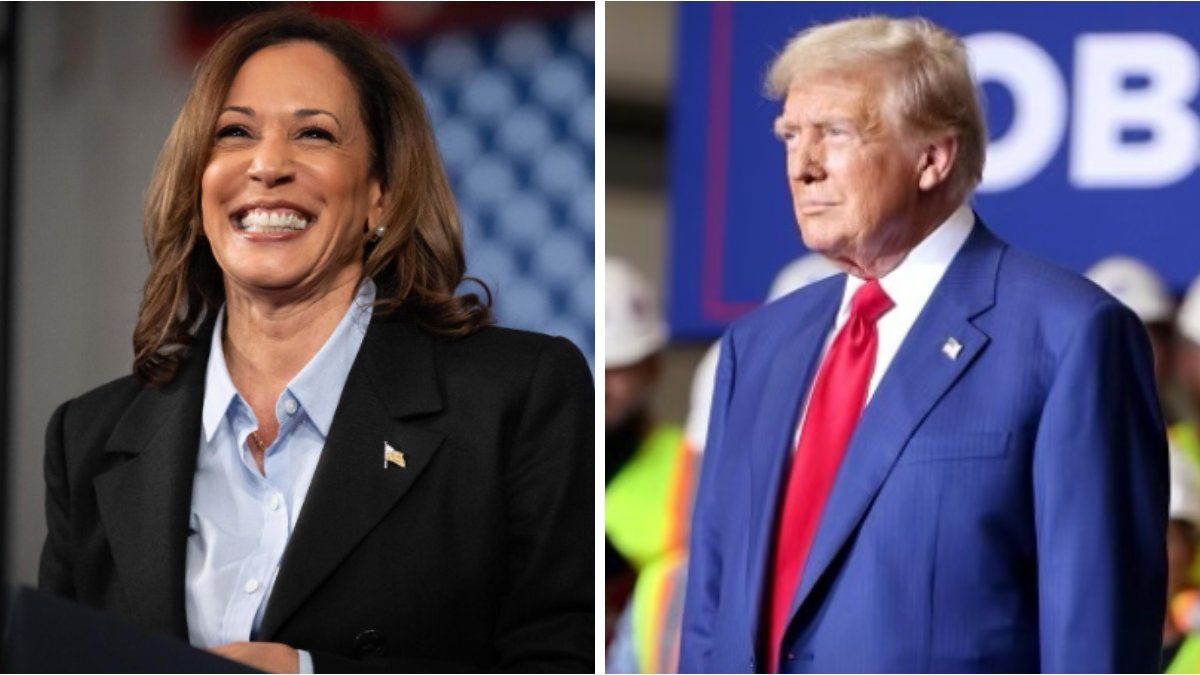The long-awaited debate between Donald Trump and Kamala Harris The race is generating great expectations due to the tight competition shown by the polls. After Joe Biden’s stumble in the last confrontation, this face-to-face is seen as crucial for the presidential race, since it could determine the course of the elections.
Kamala Harris, despite being a prominent figure in American politics, still faces the challenge of consolidating her image in the eyes of a public that mostly does not know her in depth, something that a good performance in the debate could change. For his part, Trump maintains a somewhat more relaxed stance, but his advisers are concerned about the impact that Harris’ experience as a prosecutor could have, which could expose Trump’s judicial vulnerabilities.
Harris’s decline in the polls also adds tension to the race, putting Trump slightly ahead. This decline in popularity reflects the end of a honeymoon period.and the debate is seen as an opportunity for Harris to regain ground. Meanwhile, the discourse on the political ideologies of both candidates will also be present. Trump, who repeatedly attacks Harris for her alleged radicalism, will try to reinforce this narrative to attract moderate voters. However, both candidates could choose to soften their positions to attract undecided voters.
The economic keys
On the economic front, the Trump and Harris programs are also expected to feature prominently in the debate. Harris’s proposal to increase corporate tax is causing concern in financial markets, who anticipate a negative reaction from companies.
Meanwhile, Trump is promising tax cuts that would benefit companies producing on US soil. However, despite the short-term advantages his program offers in terms of growth, long-term projections suggest his plan could significantly increase the fiscal deficit.
The study by the Wharton School of the University of Pennsylvania compares the proposals of both candidates, pointing out that, although Trump’s program could generate more immediate economic growth, its long-term impact would be detrimental to public finances. Harris, on the other hand,proposes a more sustainable approach in the long term, although with a less favorable initial impact in terms of growth.The outcome of the debate will be key to voters’ assessment of which of the two approaches they prefer, taking into account both promises of economic growth and future fiscal sustainability.
Kamala Harris vs. Trump.jpg
Kamala Harris, despite being a prominent figure in American politics, still faces the challenge of consolidating her image before a public that mostly does not know her in depth, something that a good performance in the debate could change.
The fund manager at La Financière de l’Echiquier notes that while economists are likely to opt for the second option, financial markets tend to focus more on immediate results, especially considering that Kamala Harris’s economic plan includes measures that are “particularly unfavorable for companies.” These include an increase in corporate tax from 21% to 28%, doubling the tax on foreign profits from 10.5% to 21%, and quadrupling the tax on share buybacks from 1% to 4%. According to Artaz, these proposals will likely be received coldly by the US stock markets.
However, a possible Harris victory would not guarantee the immediate implementation of these policies. “Everything will depend on the composition of the next Congress, which will be in charge of approving legislative changes, except in the case of foreign policy measures, such as tariffs, which are under the authority of the president.”
A Republican-controlled Congress, as was the case during Bill Clinton’s re-election in 1996, or a divided one, would significantly restrict Harris’s scope for action, especially on issues such as raising corporate taxes, which would be a red line for Republicans.
The politicization of markets
Adcap Grupo Financiero predicts months of market politicization and outlines the main axes of Harris’ and Trump’s economic programs.
Kamala Harris
- Reduction in the cost of living through assistance to low- and middle-income families.
- Controls on large corporations, price controls.
- Affordable housing for families: Facilitate construction and control corporate landlords.
- Regulate companies to prevent excessive price increases and monopolistic practices.
- Expand aid to families with children: $3k/child + $6k for each additional child.
- End taxing tips.
Donald Trump
- Protection of American industries through tariffs, especially China. Strengthening nearshoring and energy sufficiency.
- Tough policies against illegal immigration.
- Reduce corporate and personal taxes by simplifying the tax code.
- Investments in infrastructure.
- Expand aid to families with children: $5k/child in tax relief.
- End taxing tips.
Source: Ambito




